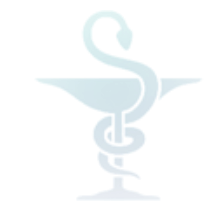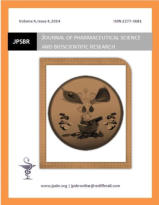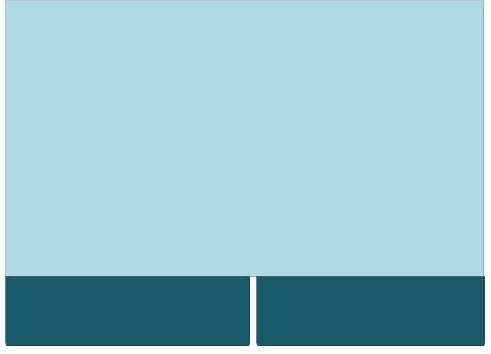


An eCTD filing for Generic Drug application in United States of America (USA)
Patel Ruchi Chunilal*, Dr.Dilip Maheshwari





Documentation Requirements for Generic Drug Application to be Marketed in India- A Review
Naishi Kirtikumar*, Dr. Dilip Maheshwari




Volume 4, Issue 4
Pages no. 228-292

Regulatory Requirement for the Approval of generic Drug in Thailand as per ASEAN Common Technical Dossier
(ACTD) - A Review
Dixit Payal B.*, Dr. Dilip Maheshwari





A Review on Comparison of regulatory guidelines for semi -regulated market for herbal formulation
Vyas Hiral Arunkumar*, Dr. Dilip G. Maheshwari





Regulatory requirement for Generic Drug Product Application of Fixed Dose Combination in ZAMBIA-A Review
Anisha M Sharda* , Dr.Dilip Maheshwari





Development and Validation of Stability Indicating RP-HPLC Method for Estimation Etizolam in Tablet Dosage Form
Chiragkumar R Panchal*, Yural Prajapati,Ms Bhumika Sakhreliya






Novel Benzamide Derivatives as Acid Pump Antagonists (APAs)
Mrs. Jinali M. Amin*, Dr. B. N. Suhagiya, Mr. I. S. Rathod, Ms. Dharmishtha R. Parmar





Development and Validation of Stability Indicating RP-HPLC Method for Estimation of Tibolone in Tablet Dosage
Form
Dipen k. Shah*, Hitesh G. Prajapati, Ms. Bhumika Sakhreliya





Design, Synthesis and Biological Screening of Novel 3-Amino Quinazolines as Antiulcer Agents
Ms. Dharmishtha R. Parmar*, Dr. B. N. Suhagiya, Mr. I. S. Rathod, Mrs. Jinali M. Amin






© JPSBR Publications 2011-2024
Powered by Opus



ABSTRACT:
The
major
pharmaceutical
market
in
the
world
is
United
States.
The
International
Conference
on
Harmonization
of
Technical
Requirements
for
Registration
of
Pharmaceuticals
for
Human
Use
(ICH)
Common
Technical
Document
(CTD)
has
become
the
obligatory
format
for
the
EU,
Japan,
Canada,
Switzerland
and
Australia,
and
the
recommended
format
in
the
US.
An
electronic
CTD
(eCTD)
was
developed
in
parallel
with
the
CTD.
Three
ICH
regions
US,
Europe
and
Japan
now
accept
eCTD
filings.
The
purpose
of
this
article
is
to
survey
the
eCTD
technical
requirements
in
USA
and
to
discuss
some
of
the
practicalities
involved
in
writing,
compiling
and
publishing
eCTD
applications.
The
eCTD
has
advantages
over
the
CTD
in
terms
of
ease
of
use,
archiving
and
for
life-cycle
management
of
registration
information.
The
eCTD
specification
defines
the
folder
structure,
contents,
XML
backbone
and
the
Study
Tagging
File
for
clinical
and
nonclinical
studies.
The
design
of
the
eCTD
documentation
needs
to
include
considerations
of
document
granularity,
templates,
shell
documents
and
regional
differences
in
filings;
for
example,
the
need
for
an
Integrated
Summary
of
Efficacy
and
Integrated
Summary
of
Safety
in
the
US.
Regulatory
agencies
are
moving
to
accept
online
filings,
but
these
are
currently
commonly
made
using
physical
media
such
as
CD,
DVD
or
tape.
The
eCTD
file
needs
to
be
‘reviewer
friendly’
by
use
of
bookmarks,
hyper
linking
and
tables
of
contents
in
individual
documents.
Many
commercial
software
tools
are
available
for
content
management,
assembly,
compilation,
publishing,
labeling,
electronic
validation
and
review.
eCTD
can
be
developed
using
leased
or
purchased
software,
specialist
contract
services,
outsourcing
from
software
vendors
or
using
contract
research
organizations.
Introduction
of
generics
with
an
“Abbreviated
New
Drug
Application”
(ANDA)
filing
with
FDA
without
costly
clinical
trials
and
to
show similar bioavailability to the brand name drug and manufacture the generic under GMP regulations
KEYWORDS:
CTD, eCTD, ICH, ANDA, XML, Regulatory requirement

ABSTRACT:
Branded
drugs
play
an
important
role
in
medications,
but
generics
are
their
cost
effective
alternatives.
Generics
are
similar
to
branded
drugs
in
terms
of
purity,
efficacy
and
are
perceived
to
be
safer
as
compared
to
new
drug
molecules,
as
they
tend
to
be
older
and
time
tested.
Indian
pharmaceutical
market
of
generic
drugs
is
increasing
day
by
day.
Indian
pharmaceutical
sector
is
rising
very
rapidly
and
there
is
a
want
of
regulatory
affairs
professionals
to
provide
the
current
needs
of
industries
for
the
global
competition.
A
regulatory
affair
is
a
somewhat
new
profession
which
has
developed
from
the
desire
of
governments
to
defend
public
health.
Substantial
documentation
and
data
are
required
in
these
types
of
submissions,
resulting
in
large,
complex
applications.
Till
date,
applicants
have
used
many
different
approaches
in
organizing
the
information
and
the
differences
in
organization
of
data
in
each
application
has
made
reviewing
more
difficult
and
can
also
lead
to
omission
of
critical
data
or
analyses.
Such
omissions
can
result
in
unnecessary
delays
in
approvals.
Thus,
a
common
format
of
submission
will
help
in
overcoming
these
hurdles.
Through
the
International
Conference
on
Harmonization
(ICH)
process,
the
Common
Technical
Document
(CTD)
guidance’s
have
been
developed
for
Japan,
European
Union,
and
United
States.
Thus,
a
brief
discussion
of
the
CTD
guidelines
has
been
presented
in
the
article
which
is
helpful
for
the
marketing
application
for
generic
drugs in India.
KEYWORDS:
Common Technical Document (CTD), Modules, Regulatory Requirements, Generic Drug Application

ABSTRACT:
The
ASEAN
pharmaceutical
market
has
experienced
strong
growth
and
a
rise
in
the
regional
standard
of
living
which
have
made
it
a
region
of
interest
for
companies
looking
to
explore
new
business
opportunities.
The
ASEAN
Pharmaceutical
market
represents
huge
potential
for
companies
looking
to
expand
operations.
Notably,
there
is
strong
interest
in
R&D
for
generics
in
this
region,
which
are
expected
to
grow
from
8.3%
of
the
total
market
in
2010
to
12.8%
by
2015,
when
they
will
be
worth
USD
12.3bn.
Within
the
next
decade,
Asia
is
expected
to
overtake
Europe
in
pharmaceutical
sales,
driven
by
growth
in
key
emerging
markets
Eighty-five
percent
of
the
world's
population
lives
in
the
emerging
markets,
and
during
the
past
5
years,
all
real
economic
growth
has
come
from
these
markets.
Some
observations
help
to
explain
why
many
large
pharmaceutical
companies
have
increased
their
presence
in
emerging
markets
in
recent
years
—
in
particular
in
ASIA.
Notably,
this
growing
presence
is
increasingly
moving
beyond
the
use
of
contract
research
organizations
and marketing of established products to include early-stage research aimed at specific medical needs of patients in these regions.
KEYWORDS:
ASEAN
Common
Technical
Dossier
(ACTD),
Regulatory
Requirements,
Thai
FDA
(Thailand
Food
Drug
and
Administration)

ABSTRACT:
Majority
of
the
world
population
even
today
relies
on
indigenous
system
of
medicine.
There
are
more
than
5000
plants
reported,
which
grows
in
different
part
of
the
world
depending
upon
environmental
and
geographical
conditions
required
by
the
plant.
Hence
in
different
countries
only
some
of
the
plant
grows
naturally
and
these
countries
do
not
have
knowledge
about
safety
and
efficacy
of
these
herbs.
Due
to
these
reason
most
of
the
countries
have
defined
their
own
regulations
regarding
registration
and
uses
of
herbal
medicines.
Some
of
the
countries
have
defied
very
strict
guideline
which
is
called
regulated
countries
and
some
of
the
countries
have
somewhat
liberal guidelines and these countries are called semi regulated countries.
The
work
suggest
that
the
different
data
and
certificates
required
by
African
region
(Nigeria
and
Kenya)
are
more
or
less
same
but
there
is
difference
in
their
administrative
policies,
dossier
preparation,
sample
requirement,
clinical
trial
data
and
hence
they
take
different
amount of time to get the product registered.
KEYWORDS:
Semi-regulated market, WHO (World Health Organization), COA, FSC, herbal formulation

ABSTRACT:
The
overview
on
the
Regulatory
Framework
of
Fixed
Dose
Combination
(FDC)
in
Zambia
with
a
brief
view
on
the
arguments
for
rational
based
fixed
dose
combination
products
used
in
Combination
Therapy.
The
criteria
of
J.R.
Crout
have
been
a
milestone
of
rational
combination
therapy
and
have
been
established
the
core
objective
of
the
most
international
regulations
concerning
FDC
medicinal
products.
The
justification
of
the
rationale,
the
balancing
of
advantages
and
disadvantages
and
the
risk
benefit
assessment
are
the
basis
for
regulatory
considerations
of
a
fixed
dose
combination
product
discussed
according
to
Zambia.
FDC
drugs
tend
to
have
a
smaller
effect
radius
in
the
genetic
interaction
networks,
which
is
an
important
parameter
to
describe
the
therapeutic
effect
of
a
drug
combination from the network perspective.
KEYWORDS:
FDC, Fixed Dose Combination, Generic Drug Product, Generic Drug Product in Zambia, Regulatory
ABSTRACT:
Stability
indicating
RP-HPLC
method
for
Etizolam
in
a
tablet
formulation
was
developed
which
is
simple,
precise,
and
sensitive
and
is
applicable
for
quantification
of
Etizolam
in
tablet
dosage
form.
An
isocratic
reversed
phase
HPLC
method
has
been
developed
for
the
Etizolam
on
a
Zorbax
(250
x
4.6
mm)
column
using
a
mobile
phase
consisting
of
methanol:
phosphate
buffer
pH-5
(42:58,v/v)
at
a
flow
rate
of
1
mL/min
and
the
detection
was
carried
out
at
238
nm.
Retention
times
of
Etizolam
were
found
to
be
2.28.
The
method
is
linear
in
range
of
5-40
µg/ml.
The
method
was
validated
with
respect
to
specificity,
linearity,
accuracy,
precision,
ruggedness
and
robustness.
This method can be used for quantification of Etizolam in tablet dosage form
KEYWORDS:
Etizolam, Stability Indicating, RP- HPLC, validation,
Zorbax
.
ABSTRACT
A
series
of
benzamide
derivatives
as
acid
pump
antagonists
(APAs)
was
synthesized
and
the
inhibitory
activities
against
H
+
/K
+
ATPase
isolated
from
pig
gastric
mucosa
were
determined.
After
elaborating
on
substituents
at
C
2
,
C
3
,
C
4
and
C
6
position
of
the
benzamide
scaffold, we have observed that the compound 11 is a potent APA with H
+
/K
+
ATPase, -log(1/IC
50
) = 1.07 µM.
KEY WORDS:
H
+
/K
+
ATPase, benzamide, acid pump antagonists (APAs)
ABSTRACT:
A
stability-indicating
reversed-phase
high
performance
liquid
chromatography
(RP-HPLC)
method
was
developed
for
the
determination
of
Tibolone,
a
drug
used
in
the
treatment
of
Hormone
replacement
therapy.
The
desired
chromatographic
separation
was
achieved
on
a
Zorbex-Sb
Phenyl
(150*4.6)5µ
column,
using
isocratic
elution
at
a
205
nm
detector
wavelength.
The
optimized
mobile
phase
consisted
of
a
ACN:
Buffer
0.05
M(NH4)HPO4)
(50
:
50)
as
solvent.
The
flow
rate
was
1.2
mL/min
and
the
retention
time
of
Tibolone
was
5.7
min.
The
linearity
for
Tibolone
was
in
the
range
of
12.5-37.5μg/mL.
Recovery
for
Tibolone
was
calculated
&
The
stability-indicating
capability
was
established
by
forced
degradation
experiments
.The
developed
RP-HPLC
method
was
validated
according
to
the
International
Conference
on
Harmonization
(ICH)
guidelines.
This
validated
method
was
applied
for
the
estimation
of
Tibolone
in
commercially
available tablets.
Keywords :
Tibolone, method validation, forced degradation, RP-HPLC, Zorbex-Sb Phenyl

ABSTRACT:
Quinazoline
derivatives
are
associated
with
broad
spectrum
of
biological
activities.
In
view
N-((3-Benzamido-4-oxo-3,4-dihydroquinolin-
2-yl)methyl)-N-(substituted)
phenylbenzamide
derivatives
were
synthesized
and
tested
for
in-vitro
antiulcer
activity
on
isolated
hog
gastric
mucosal
H
+
/K
+
-ATPase,
The
synthetic
scheme
of
the
prepared
compounds
is
given.
All
the
synthesized
compounds
were
characterized
by
using
IR,
MS
and
1
H
NMR
spectroscopy.
Compounds
were
screened
for
their
antiulcer
activity:
compound
1e
showed
maximum inhibitory activity. Omeprazole is used used as standard.
Keywords: Synthesis; 4-quinazolinone; antiulcer activity, H+/K+-ATPase, Potassium-competitive acid blockers






















































































































